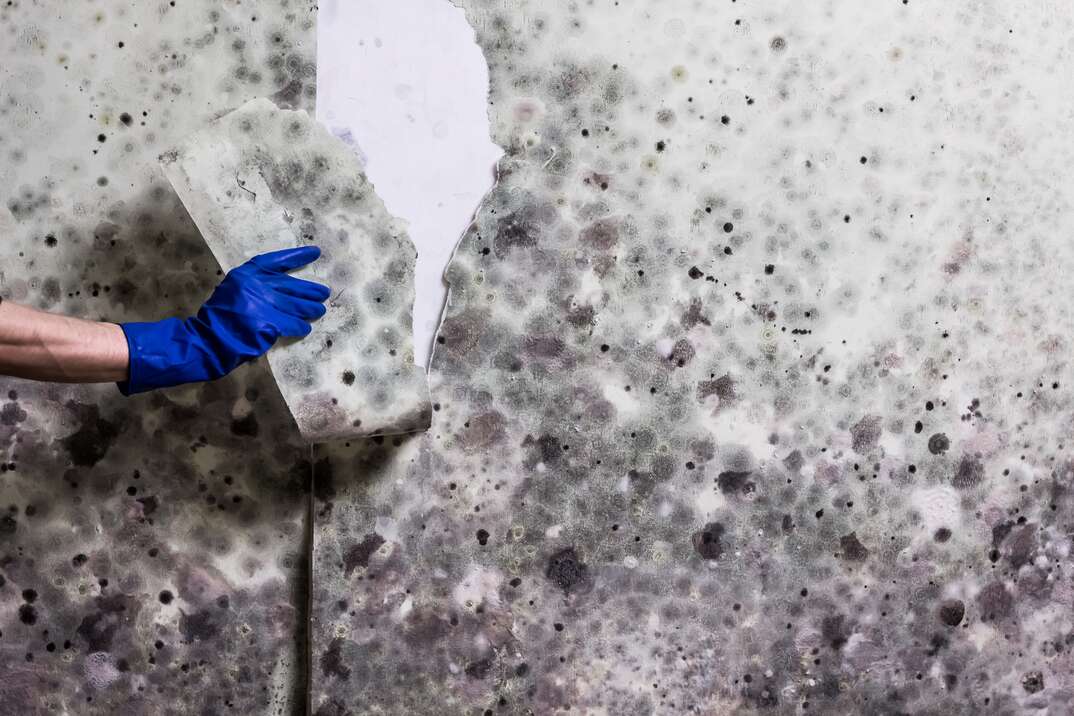How to Prevent Mold in the Bathroom

Moldy surfaces in the bathroom are gross, but in some ways, your bathroom is made to attract the stuff. Because it tends to be the wettest room in the house, it provides an ideal environment for mold to grow.
Read More Home Improvement Articles
The good news is that by following a few common-sense tips, you can easily keep your bathroom mold-free.
What Is Mold?
But first, what exactly is the stuff?
Believe it or not, mold — and its related scourge, mildew — is a type of fungus. Both mold and mildew form via spores that can germinate in a wet environment, such as a moist shower floor, or a bath mat that is perpetually damp. The easiest way to tell mold and mildew apart is that mold tends to grow up and down, penetrating the surface it is attached to and rising off that surface in a fuzzy clump. Mildew tends to stay level with the surface as it spreads outward. Mold can be a variety of colors, but overall, it is darker than mildew, which tends to be more whitish or gray in appearance.
Is Mold Dangerous?
It can be. When mold spores become airborne, they can trigger asthma or other allergic reactions in individuals who are sensitive to them. Left unchecked, mold can penetrate surfaces beneath those you can see, like plywood flooring or drywall. Once it has colonized these deeper surfaces, it can become a significant health hazard that is extremely hard to remove.
How Do I Prevent Mold From Growing In My Bathroom?
In short, the best way to keep mold at bay is to keep your bathroom and its surfaces as dry as possible. Here are a few ways to get that accomplished.
Step 1: Ventilate
If you have a bathroom fan, you should run it for about a half hour after you are done showering. This will help suck away the steam and keep the bathroom dry. If you don't have a fan, but you do have a window in the bathroom, you can leave the window open for the same amount of time after you're done showering. If privacy is not a major concern, you can leave the bathroom door open while showering to prevent steam buildup. If you don't have a bathroom fan or window, you could consider installing a fan or using a portable oscillating fan to circulate the air and help things dry faster.
Step 2: Dry Up
Mold spores need about 24 to 48 hours to take hold on a wet surface, so by denying them such an environment, you'll be taking a major step in preventing their growth. While no one is saying that you need to leave your bathroom bone dry after taking a shower, getting rid of as much moisture as possible is certainly a good idea. You can accomplish this by using a shower squeegee to quickly get excess water off the shower walls. You should also open your shower curtain to its full length when you are done showering so that it has a chance to air dry. Water trapped between the folds of the shower curtain provides an ideal habitat for mold growth.
- More Related Articles:
- How Much Does a Home Inspection Cost?
- 4 Tips for Hiring a General Contractor for Your Next Remodeling Project
- Should You Hire a Contractor or a Handyman?
- 5 Things to Look For When You're Hiring an Electrician
- What to Look for When Hiring an Exterminator
Step 3: Wash and Dry Towels and Other Fabrics
Just as your shower curtain can foster mold growth in the folds, if you don't store your bath towel properly, mold can also take hold here. Try to hang your towels across at least two hooks when you are done using them, preferably in an area that has good airflow. Lightweight towels will dry faster than heavy, plush versions. Experts recommend laundering towels after every three uses or about once per week. If you have a bath mat that tends to get wet during shower time, be sure to hang it up as well when you are done. Better yet, if your bath mat is perpetually wet, consider replacing it with something that will allow better airflow, like a teak shower board. You should also wash your shower curtain on a regular basis and if you don't have a washable liner, replace it at the first signs of mold or mildew buildup.
Step 4: Sort Out the Drainage Situation
If you notice that you have a particular area of your bathroom that stays wet around your shower stall, check to see if there are any leaks you need to address. Doing so rarely takes more than a little caulk, and it will keep water flowing down the shower drain instead of all over your bathroom floor.
Step 5: Spray
Even if you don't have the time to clean your bathroom from top to bottom on a regular basis, you can keep mold away by using an anti-mold spray cleaner. A quick spritz is usually all it takes to make the surfaces inhospitable to mold spores. If you'd prefer to go the natural route, you can fill a spray bottle with a one-to-one mixture of distilled white vinegar and water and spray down your walls before squeegeeing after showers.
Elocal Editorial Content is for educational and entertainment purposes only. Editorial Content should not be used as a substitute for advice from a licensed professional in your state reviewing your issue. Systems, equipment, issues and circumstances vary. Follow the manufacturer's safety precautions. The opinions, beliefs and viewpoints expressed by the eLocal Editorial Team and other third-party content providers do not necessarily reflect the opinions, beliefs and viewpoints of eLocal or its affiliate companies. Use of the Blog is subject to the
Website Terms and Conditions.The eLocal Editorial Team operates independently of eLocal USA's marketing and sales decisions.



